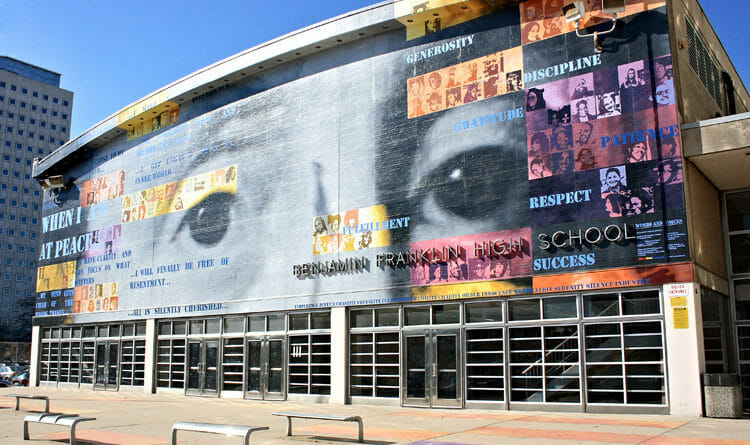Philadelphia HS CTE Connects to Careers
When Benjamin Franklin High School senior Warren Crosby was thinking about what career and technical education (CTE) program he would join, he chose the precision machining and tool technology program.
“After I talked to Mr. Sizer, I knew right away that I wanted to be a part of the precision machining program,” Warren said. “I wanted to learn how to make parts for all sorts of things.”
In the program, Warren has worked with blueprints and has made parts. After graduating from high school, Warren will have a job at the Navy Yard. He also has a commitment with the National Guard.
“I do want to go into the military, but I also want to go to trade school,” Warren said. “I want to be in the automotive field, but I want to make my own parts.”
Warren is among a group of 27 students in the precision machining and tool technology program.
Led by CTE teacher Ronald Sizer, the program combines classroom and hands-on training to provide students with skills needed to begin a high-paying career in manufacturing.
“The program includes two parts: shop work and learning the theory of the industry,” Sizer said. “My students right now are in the shop and making parts. We made some chest parts, put threads on bolts and made our own bolts.
“We’re making a lot of parts that are made in the industry whether it’s the aerospace industry or healthcare industry,” he added. “Our kids are down the Navy Yard making parts for the Navy. Math is also a huge part of this program as well.”
Sizer has been a CNC machinist for nearly 23 years. He worked on National Defense contracts, which consisted of making parts for the military’s submarines and aircraft carriers.
He would later switch markets and began making parts for the medical device industry where he machined important parts and components such as bone files, bone replacements, small devices for heart issues and operating equipment for medical professionals.
He was also responsible for making aerospace parts for American Airlines.
“There’s a shortage in America of skilled laborers and it’s only getting worse,” Sizer said. “What’s important to me is not only diversifying the industry, but also giving students an opportunity to put this industry back on top.
“Watching my students grow, learn, graduate and gain employment or enter a trade school is the most satisfying feeling,” he added. “I’m proud of my students.”
Teresa Bussey is a senior machinist in the precision machining program. Upon graduation, she will have two certifications by the National Institute of Metalworking Skills.
She will have a certificate in OSHA-10, which is training that teaches basic safety and health information to workers in construction and general industry, and a time management certificate. Teresa will also be working at the Navy Yard after graduation.
“I’ve learned so much from the program itself and Mr. Sizer,” Teresa said. “I’m excited to be going from high school to a full-time career. It’s an opportunity that a lot of students don’t get right away, so I’m really proud of this accomplishment.”
In the welding technology program, students learn four different welding processes including gas metal arc welding, shielded metal arc welding, flux cored arc welding and gas tungsten arc welding. In the program, students get 1080 hours of training.
Upon the completion of the program, students are prepared to take an industry standard test designed by the American Welding Society or the American Petroleum Institute. The program, which is led by Harry Graham, has 30 students.
An alumni of the Edward Bok Vocational Technical High School, Graham has worked in the construction industry for over 30 years. He served in the Navy Reserves Construction Battalion and the Pennsylvania Air Force National Guard.
He previously welded on warships at the Philadelphia Navy Yard and has also welded on high rise buildings, bridges, malls and numerous railroad tracks for the Southeastern Pennsylvania Transportation Authority.
“In the program, students learn the oxy fuel cutting process and the plasma arc cutting process,” Graham said. “These are standard cutting processes that are used to cut either steel or alloy, ferrous metals or non-ferrous metals depending on the process.
“They learn about the properties of metal, as far as the mechanical properties of metal, chemical properties of metal and physical properties of metal,” he added. “They also learn how metal reacts to heat.”
Graham said he enjoys teaching his students and giving them first-hand insight into the welding industry.
“I really enjoy teaching the students and I’m happy that I’m doing that at Benjamin Franklin,” Graham said. “While welding is a difficult trade to learn, there are so many different career paths that students can follow just from learning about welding.
“I want our students to be able to build their careers through the CTE programs we offer and the skills they learn,” he added. “I also want our students to leave us making a decent wage from their career and a very decent living.”

